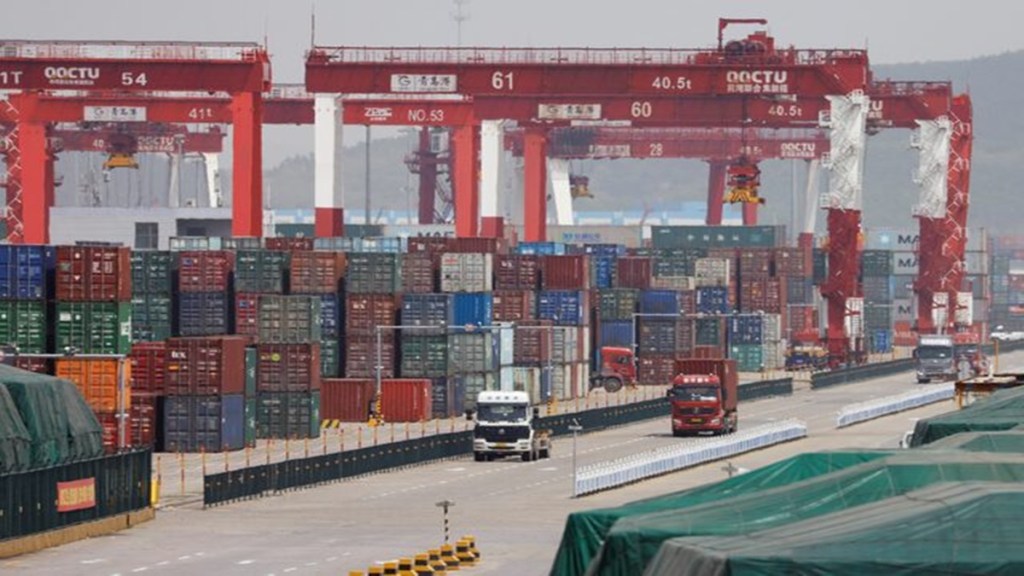By Amitendu Palit
The deluge of opinions on the impact of President-elect Donald Trump’s expected tariffs on China has hardly focused on what might be China’s responses. Here is a look at some of the possibilities.
Tariff retaliation
China continues to export far more to the US than the US does to China. Despite a reduction from $538 billion in 2018 — when the trade war began —to $427 billion in 2023, Chinese exports to the US remain far higher than US exports to China, which have increased from $120.3 billion to $147.8 billion during this period.
From a Chinese perspective, retaliatory tariffs imposed since 2018 on US exports haven’t dented their market access in China. This, though, might not bother China much. It’ll be keener on expanding the access for its products in the US market, even if that means allowing some reciprocal access to US goods. Reciprocal tariffs might not be the best option in this regard.
More investments in other markets
The tariff-induced diversion in investments has resulted in large chunks of capital from the mainland to move to other countries. The relocation has been motivated by the urge to avoid tariffs on exports from the mainland to the US. Mexico, Indonesia, Vietnam, and Morocco are some of the economies that have absorbed several of the shifting investments and increased their exports to the US.
Higher US tariffs on Chinese exports will encourage the producers of the latter to locate more markets from where freer access to the US can be obtained. These markets are likely to include those that have preferential access to the US through specific country-group and bilateral economic arrangements, such as the African Growth Opportunities Act, the US Generalized System of Preferences, and existing bilateral free trade agreements of the US.
Specific engagement with LDCs
From December 2024, China will be withdrawing tariffs on all imports from the least developed countries (LDCs). This was announced a couple of months before Trump won the election. By removing tariffs on LDC exports to China, the latter aims to consolidate its pole position as the key economic partner of LDCs.
It is noteworthy that several of LDCs, by virtue of their economic status, enjoy unilateral preferential access to the US market. By confirming its commitment to the economic progress of the LDCs, China will enjoy a reciprocal strategic advantage in getting through its investments in these countries for exporting onward to the US.
There are also noticeable overlaps among beneficiaries of different preferential market access programmes to the US that China will look forward to tapping. Afghanistan, Cambodia, Ethiopia, Nepal, and Yemen, for example, are some countries that enjoy preferential access to the US through multiple schemes. China’s trade relations with all these countries are strong and are expected to be supplemented by more export-oriented investments.
Engaging with other US tariff targets
While China figures high on the US tariff action list, some countries that are major sources of imports for the US, and with whom it has large bilateral trade deficits — such as Mexico, Vietnam, Thailand, India, and Malaysia — are also likely to be confronted with the prospect of trade actions. China will be closely watching the tariffs that are imposed on these countries and their responses, including “deals” they might strike with the US.
From the perspective of relocating Chinese investments for exporting to the US, more tariffs on the Southeast Asian economies — Vietnam, Thailand, and Malaysia — can invite complications. Such an eventuality will encourage China to commit more closely to the trade frameworks it has with these economies, such as the Regional Comprehensive Economic Partnership. It will attempt to compensate for the potential lack of access to the US market by expanding the scale of the existing framework markets.
At the same time, China will focus on efforts to deepen economic and trade links with other markets. One of the particularly strong possibilities in this regard is the BRICS. Indonesia, Malaysia, Thailand, and Vietnam have become partners of the BRICS with Malaysia having applied for a full membership. Higher US tariffs on exports from these countries will create strong economic rationales for them to seek alternate market access elsewhere. The BRICS can turn out to be a feasible option.
Pursue investment deal with the US
The easiest option for China to get more access to the US market is to be allowed to invest in the US. The “tariff-jumping” route for investments, though, will come at a price. There will be restrictions on exporting back to China. There will also be a fairly large negative list for investments, particularly for high-value strategic sectors that connect to the Section 301 of the US Trade Act of 1974, on which most of the current specific tariffs on Chinese exports have been imposed for safeguarding national security.
Notwithstanding these costs, China might still hope to cut a deal with the Trump administration that enables it to shift some production to the US. This, indeed, might be an acceptable proposition for the US too. It will eliminate the need for monitoring imports from several countries, including prominent ones such as Mexico and Vietnam, through which Chinese exports are rerouting to the US. Apart from saving costs, it will also enable the Trump administration to showcase the Chinese investments prominently to its domestic constituencies by declaring them as part of “Make in America” on American terms. China would hope that these considerations are appealing enough for the Trump administration to engage and commit to a deal.
The writer is senior research fellow and research lead (trade and economics), Institute of South Asian Studies, National University of Singapore.
Disclaimer: Views expressed are personal and do not reflect the official position or policy of FinancialExpress.com. Reproducing this content without permission is prohibited.

